Researchers used fossil evidence to engineer a soft robotic replica of an extinct marine organism to understand how locomotion has changed in animals over time.
Tag: Fossils
450-million-year-old organism finds new life in Softbotics
Researchers in the Department of Mechanical Engineering at Carnegie Mellon University, in collaboration with paleontologists from Spain and Poland, used fossil evidence to engineer a soft robotic replica of pleurocystitid, a marine organism that existed nearly 450 million years ago and is believed to be one of the first echinoderms capable of movement using a muscular stem.
Ancient sea monster remains reveal oldest mega-predatory pliosaur
The fossils of a 170-million-year-old ancient marine reptile from the Age of Dinosaurs have been identified as the oldest-known mega-predatory pliosaur – a group of ocean-dwelling reptiles closely related to the famous long-necked plesiosaurs. The findings are rare and add new knowledge to the evolution of plesiosaurs. The study has been published in the journal Scientific Reports.
Dinosaur feathers reveal traces of ancient proteins
Palaeontologists at University College Cork (UCC) in Ireland have discovered X-ray evidence of proteins in fossil feathers that sheds new light on feather evolution.
Prehistoric fish fills 100 million year gap in evolution of the skull
A 455-million-year-old fossil fish provides a new perspective on how vertebrates evolved to protect their brains, a study has found.
Whale like filter-feeding discovered in prehistoric marine reptile
A remarkable new fossil from China reveals for the first time that a group of reptiles were already using whale-like filter feeding 250 million years ago.
Apex predator of the Cambrian likely sought soft over crunchy prey
Biomechanical studies on the arachnid-like front “legs” of an extinct apex predator show that the 2-foot (60-centimeter) marine animal Anomalocaris canadensis was likely much weaker than once assumed. One of the largest animals to live during the Cambrian, it was probably agile and fast, darting after soft prey in the open water rather than pursuing hard-shelled creatures on the ocean floor.
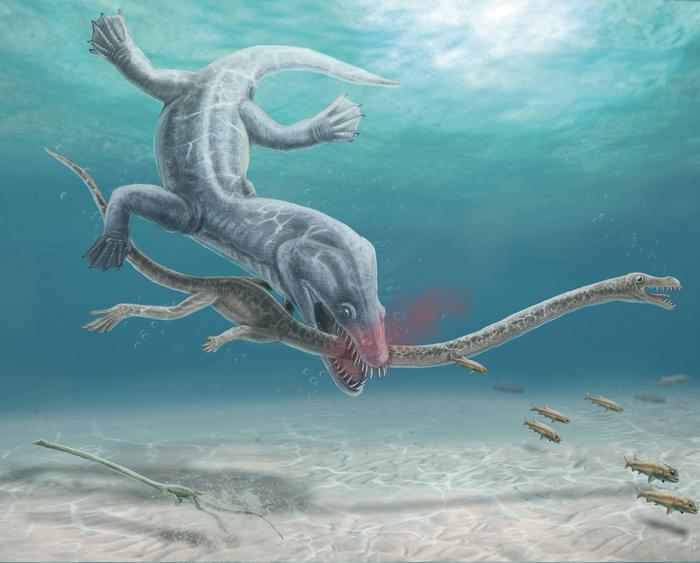
These long-necked reptiles were decapitated by their predators, fossil evidence confirms
In the age of dinosaurs, many marine reptiles had extremely long necks compared to reptiles today.
New details of Tully monster revealed
For more than half a century, the Tully monster (Tullimonstrum gregarium), an enigmatic animal that lived about 300 million years ago, has confounded paleontologists, with its strange anatomy making it difficult to classify.
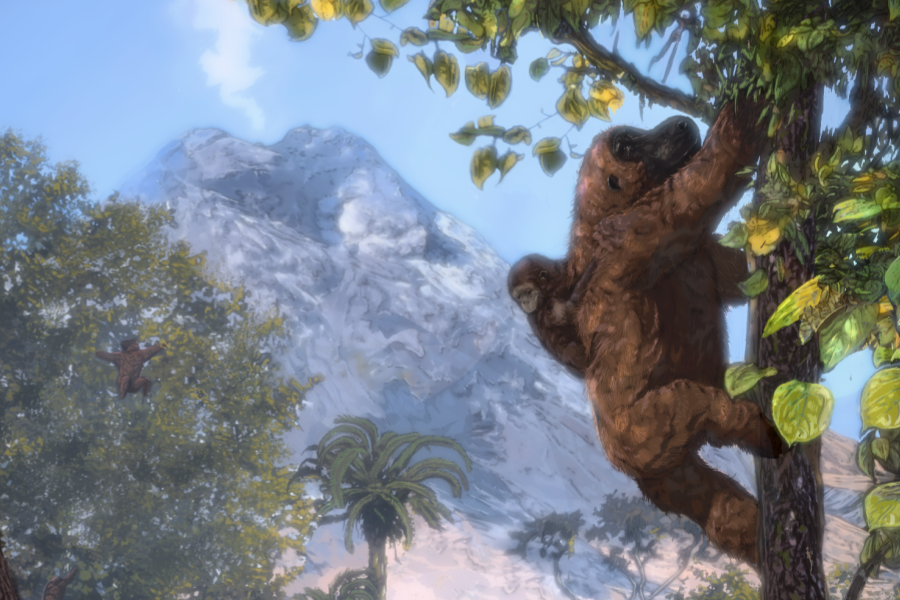
New studies push back evidence for open habitats in Africa by more than 10 million years
The story of human evolution has long been a tale of a forested Africa that gradually became drier, giving rise to open grasslands and causing our forest-loving ape ancestors to abandon the trees and become bipedal. Even though ecological and fossil evidence suggested this narrative was too simplistic, the theory remains prominent in many evolutionary scenarios.
New studies push back evidence for open habitats in Africa by more than 10 million years
Using rigorous and detailed collection methods, a University of Minnesota Twin Cities-led research team was able to place the remains of fossil apes, such as Morotopithecus, within detailed habitat reconstructions.
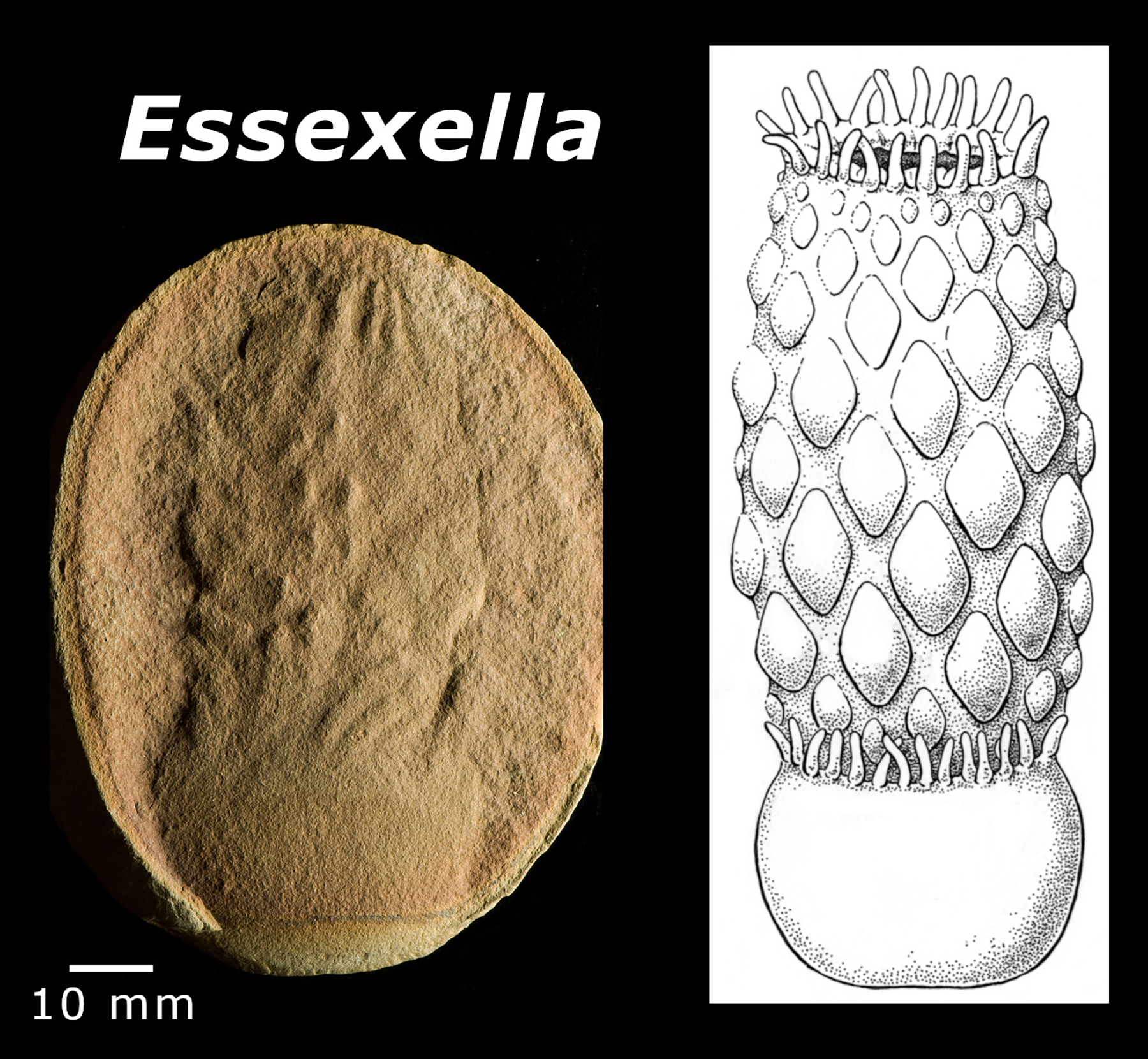
Paleontologists flip the script on anemone fossils
In a newly published paper in the journal Papers in Palaeontology, University of Illinois Chicago’s Roy Plotnick and colleagues report that fossils long-interpreted as jellyfish were anemones. To do so, they simply turned the ancient animals upside down.
Mistaken fossil rewrites history of Indian subcontinent for second time
Scientists discovered the first-ever Dickinsonia fossil in India two years ago, changing our understanding of how the continent came to be. Now, new research shows the “fossil” was just a beehive all along, changing our understanding for a second time, and the original scientists now support the new findings.
New biography of famous palaeontologist Mary Anning unearthed from University of Bristol archives
A short biography of pioneering scientist Mary Anning, written in the final ten years of her life, has been made public for the very first time.
Fossil CSI: Analysis of giant extinct marine reptile graveyard suggests mysterious site was ancient birthing grounds
Marine giants make migrations across the ocean to give birth where predators are scarce, congregating annually along the same stretches of coastline. A study suggests that 200 million years before whales evolved, school bus-sized marine reptiles called ichthyosaurs may have made similar migrations.
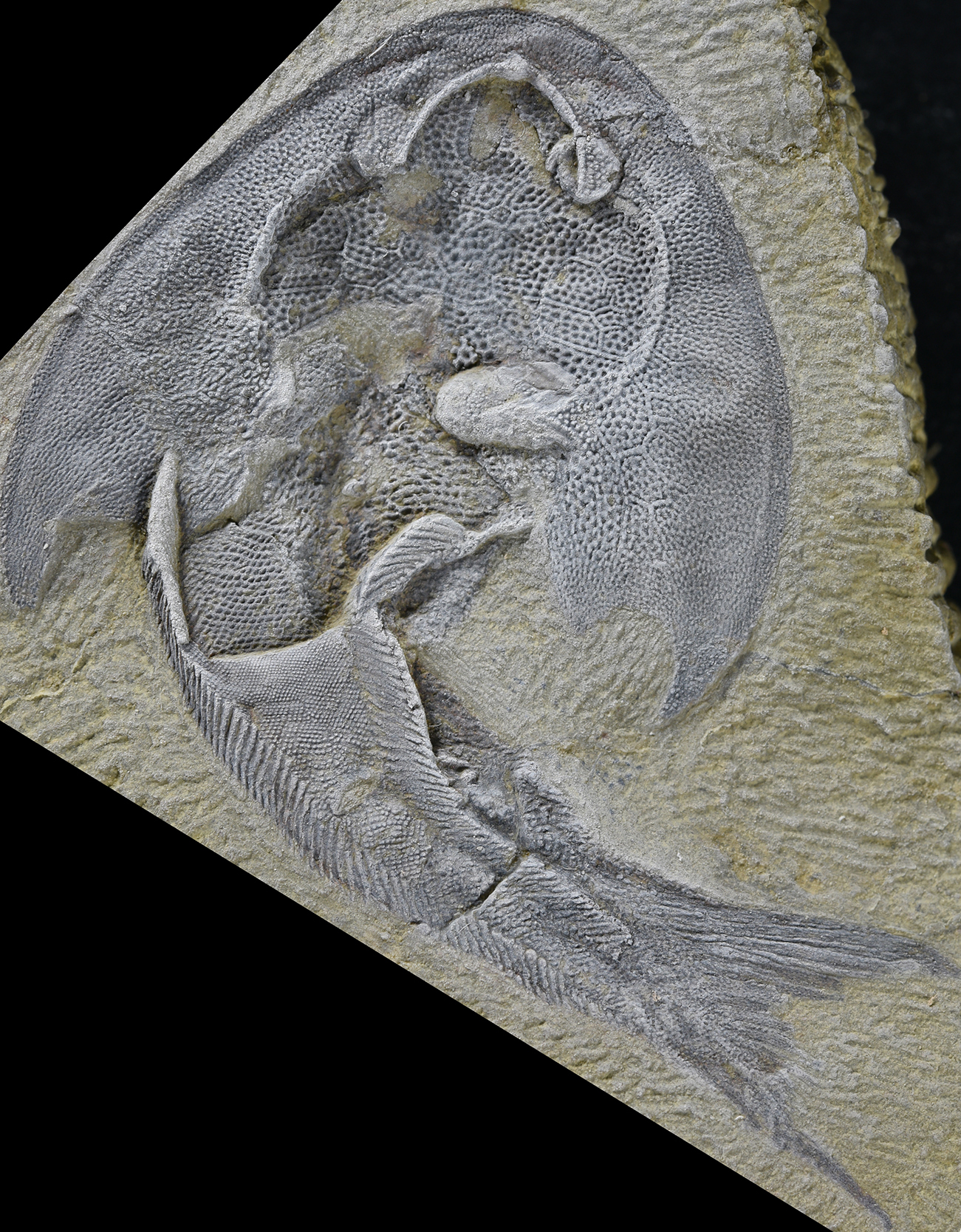
Dead fish breathes new life into the evolutionary origin of fins and limbs
A trove of fossils in China, unearthed in rock dating back some 436 million years, have revealed for the first time that the mysterious galeaspids, a jawless freshwater fish, possessed paired fins.
30-million-year-old amphibious beaver fossil is oldest ever found
A new analysis of a beaver anklebone fossil found in Montana suggests the evolution of semi-aquatic beavers may have occurred at least 7 million years earlier than previously thought, and happened in North America rather than Eurasia.
New 3D model shows: Megalodon could eat prey the size of entire killer whales
The reconstructed megadolon (Otodus megalodon) was 16 meters long and weighed over 61 tons. It was estimated that it could swim at around 1.4 meters per second, require over 98,000 kilo calories every day and have stomach volume of almost 10,000 liters.
The speed at which spinosaurid dinosaur teeth were replaced accounts for their overabundance in Cretaceous sites
This has been confirmed in the article ‘New contributions to the skull anatomy of spinosaurid theropods: Baryonychinae maxilla from the Early Cretaceous of Igea (La Rioja, Spain)’ published in the journal Historical Biology by Iker Isasmendi (lead author) and Xavier Pereda of the UPV/EHU-University of the Basque Country, Pablo Navarro of the UR-University of La Rioja, Angélica Torices, director of the Chair of Palaeontology at the UR, plus other experts of the Complutense University of Madrid and the Palaeontological Visitors’ Centre of La Rioja.
Rotting fish help solve mystery of how soft tissue fossils form
New research at the University of Leicester has transformed scientists’ understanding of how spectacular fossils with delicate soft tissues form.
Fossils in the ‘Cradle of Humankind’ May Be More Than a Million Years Older Than Previously Thought
The earth doesn’t give up its secrets easily – not even in the “Cradle of Humankind” in South Africa, where a wealth of fossils relating to human evolution have been found.
The Persistent Effects of Colonialism in Caribbean Science
Prior to the first world war, sprawling European empires collectively controlled roughly 80% of Earth’s landmass.
Glowing spider fossils prompt breakthrough study of how they were preserved at Aix-en-Provence
A geologic formation near Aix-en-Provence, France, is famed as one of the world’s chief treasure troves of fossil species from the Cenozoic Era. Since the late 1700s, scientists there have been unearthing amazingly well-preserved fossilized plants and animals.
Ancient ancestors evolved to be strong and snappy, study finds
Researchers led by the University of Bristol show that the earliest jaws in the fossil record were caught in a trade-off between maximising their strength and their speed.
University of Washington researchers discover four dinosaurs in Montana
A team of paleontologists from the University of Washington excavated four dinosaurs in northeastern Montana this summer. The four dinosaur fossils are: the ilium of an ostrich-sized theropod; the hips and legs of a duck-billed dinosaur; a pelvis and limbs from another theropod; and a Triceratops specimen.
A new species of otter discovered in Germany
Researchers from the Universities of Tübingen and Zaragoza have discovered a previously unknown species of otter from 11.4-million-year-old strata at the Hammerschmiede fossil site.
Study shows evidence of beer drinking 9,000 years ago in Southern China
Alcoholic beverages have long been known to serve an important socio-cultural function in ancient societies, including at ritual feasts.
T. rex’s jaw had sensors to make it an even more fearsome predator, new digital study finds
Tyrannosaurus rex was not just a huge beast with a big bite, it had nerve sensors in the very tips of its jaw enabling it to better detect – and eat – its prey, a new study published in the peer-reviewed journal Historical Biology today finds.
New fossils show what the ancestral brains of arthropods looked like
Exquisitely preserved fossils left behind by creatures living more than half a billion years ago reveal in great detail identical structures that researchers have long hypothesized must have contributed to the archetypal brain that has been inherited by all arthropods.
Flinders Ranges virtual tourists to be ‘teleported’ into the deep past for World Heritage bid
Sir David Attenborough has named it one of his favourite places on Earth, and the world will soon see why via an immersive virtual tour of the iconic Flinders Ranges.
Pandemic-era paleontology: A wayward skull, at-home fossil analyses and a first for Antarctic amphibians
Researchers at the University of Washington have discovered the first fossil evidence of an ancient amphibian, Micropholis stowi, from Antarctica. Micropholis lived in the Early Triassic, shortly after Earth’s largest mass extinction. It was previously known only from fossils in South Africa.
Long-accepted theory of vertebrate origin upended by fossilized fish larvae
A new study out of the University of Chicago, the Canadian Museum of Nature and the Albany Museum challenges a long-held hypothesis that the blind, filter-feeding larvae of modern lampreys are a holdover from the distant past, resembling the ancestors of all living vertebrates, including ourselves.
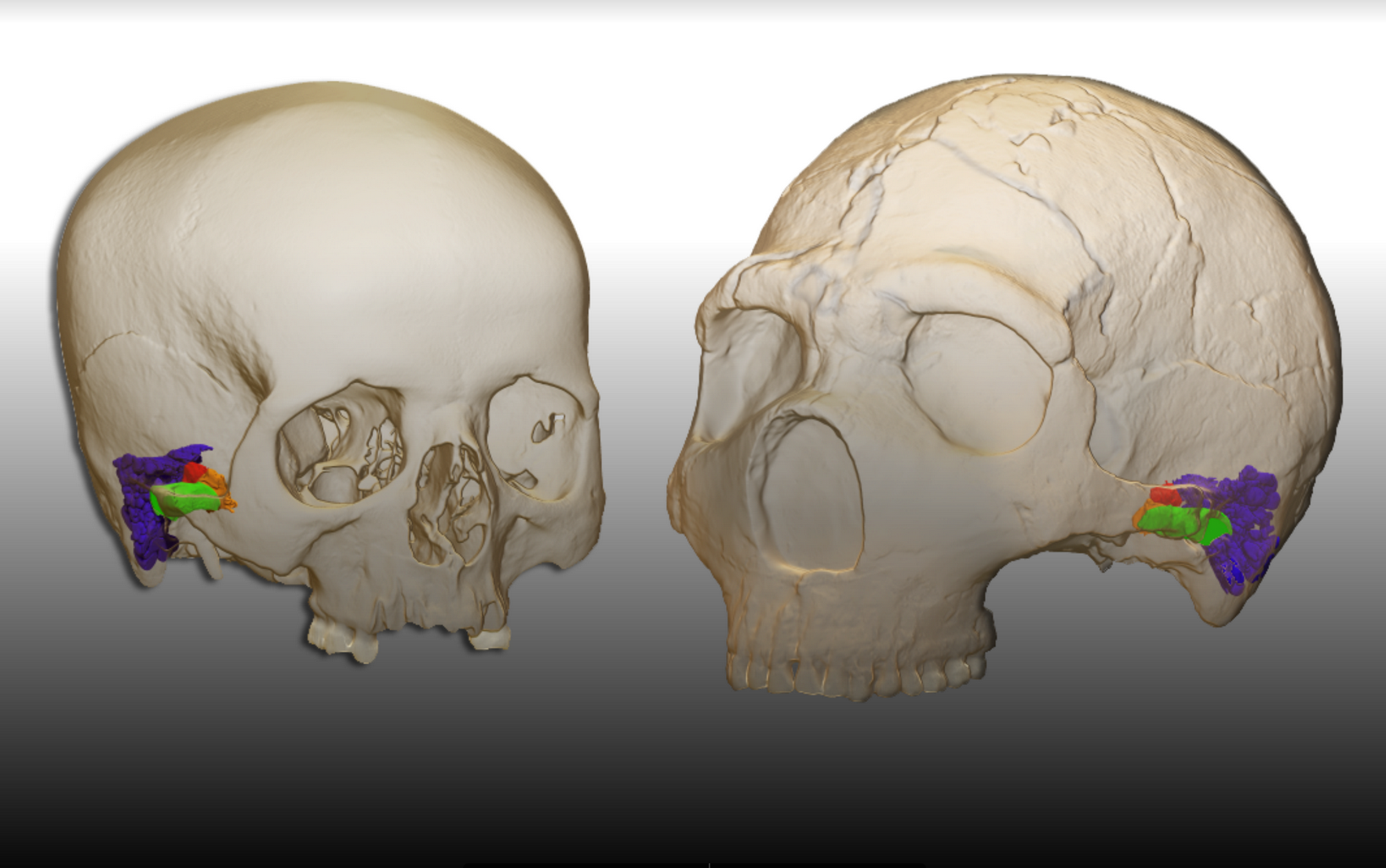
Neandertals had the capacity to perceive and produce human speech
Neandertals — the closest ancestor to modern humans — possessed the ability to perceive and produce human speech, according to a new study published by an international multidisciplinary team of researchers including Binghamton University anthropology professor Rolf Quam and graduate student Alex Velez.

Scientists describe earliest primate fossils
A new study published Feb. 24 in the journal Royal Society Open Science documents the earliest-known fossil evidence of primates. These creatures lived less than 150,000 years after the Cretaceous-Paleogene mass extinction event that killed off non-avian dinosaurs and saw the rise of mammals.
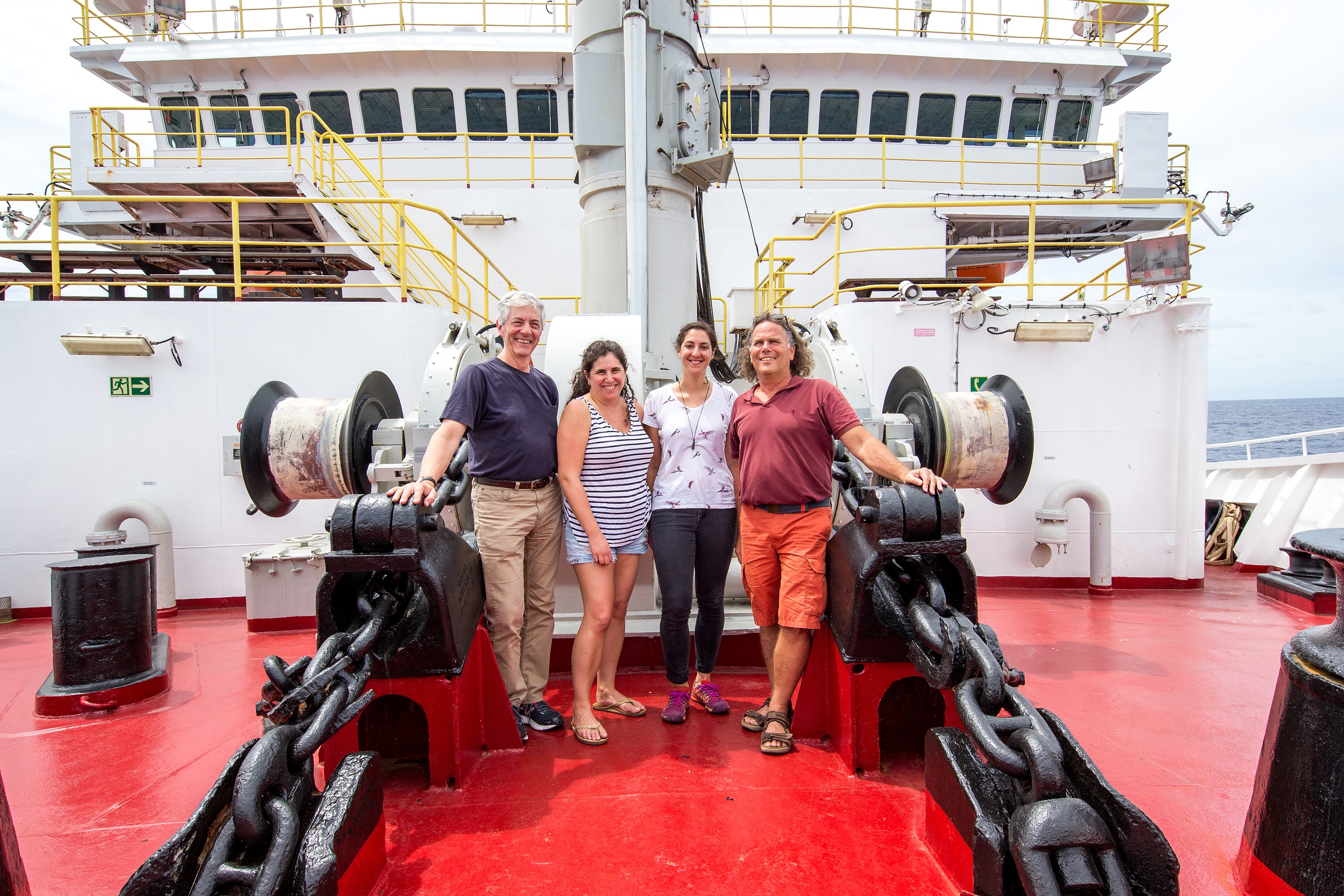
Important Climate Change Mystery Solved by Scientists
Scientists have resolved a key climate change mystery, showing that the annual global temperature today is the warmest of the past 10,000 years – contrary to recent research, according to a Rutgers-led study in the journal Nature. The long-standing mystery is called the “Holocene temperature conundrum,” with some skeptics contending that climate model predictions of future warming must be wrong. The scientists say their findings will challenge long-held views on the temperature history in the Holocene era, which began about 12,000 years ago.
Study resolves the position of fleas on the tree of life
A study of more than 1,400 protein-coding genes of fleas has resolved one of the longest standing mysteries in the evolution of insects, reordering their placement in the tree of life and pinpointing who their closest relatives are.
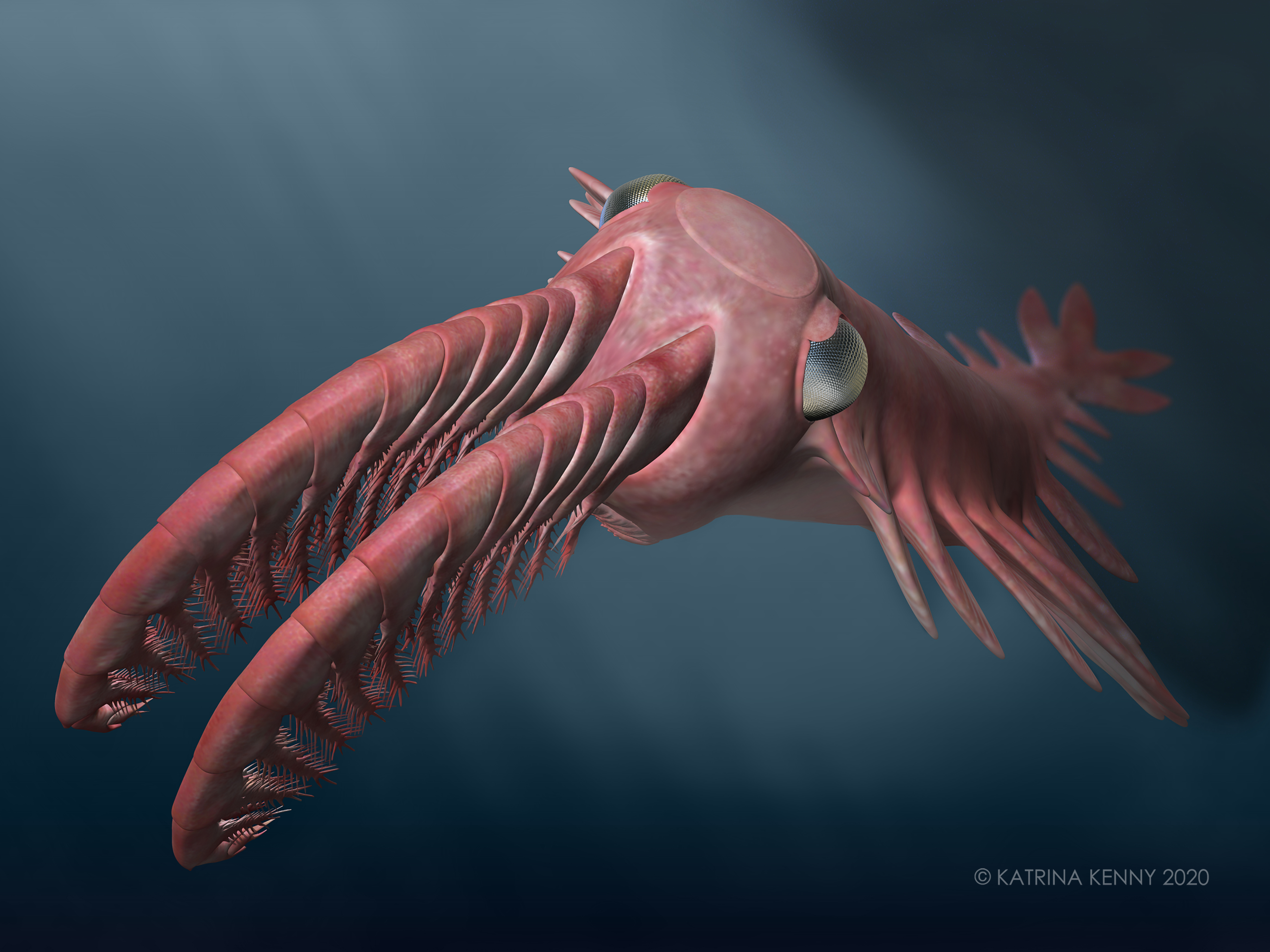
Incredible vision in ancient marine creatures drove an evolutionary arms rac
Ancient deep sea creatures called radiodonts had incredible vision that likely drove an evolutionary arms race according to new research published today.
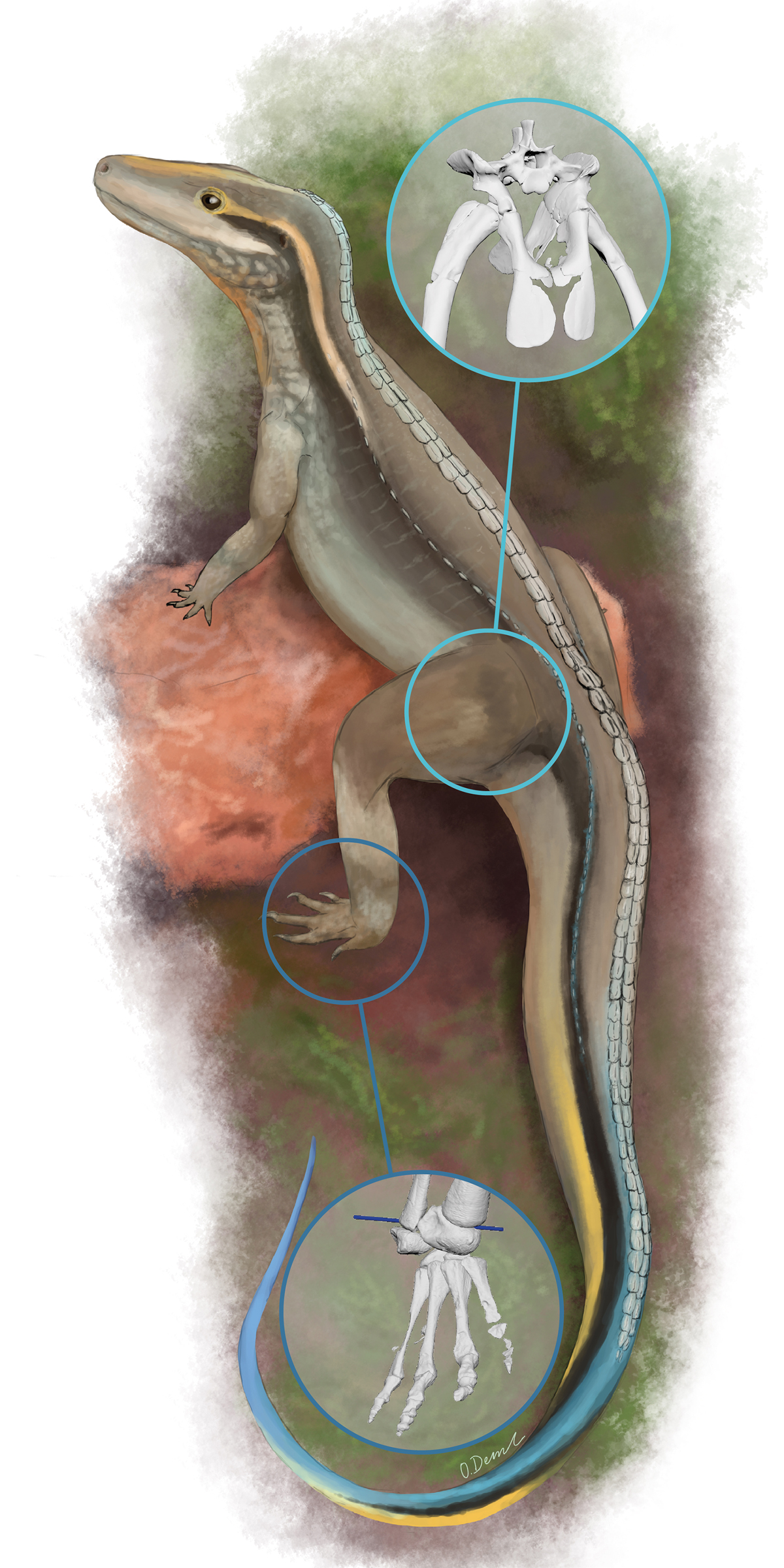
Computational study of a famous fossil offers insight into the evolution of locomotion in “ruling reptiles”
Scientists from the University of Bristol and the Royal Veterinary College (RVC) used three-dimensional computer modelling to investigate the hindlimb of Euparkeria capensis–a small reptile that lived in the Triassic Period 245 million years ago–and inferred that it had a “mosaic” of functions in locomotion.
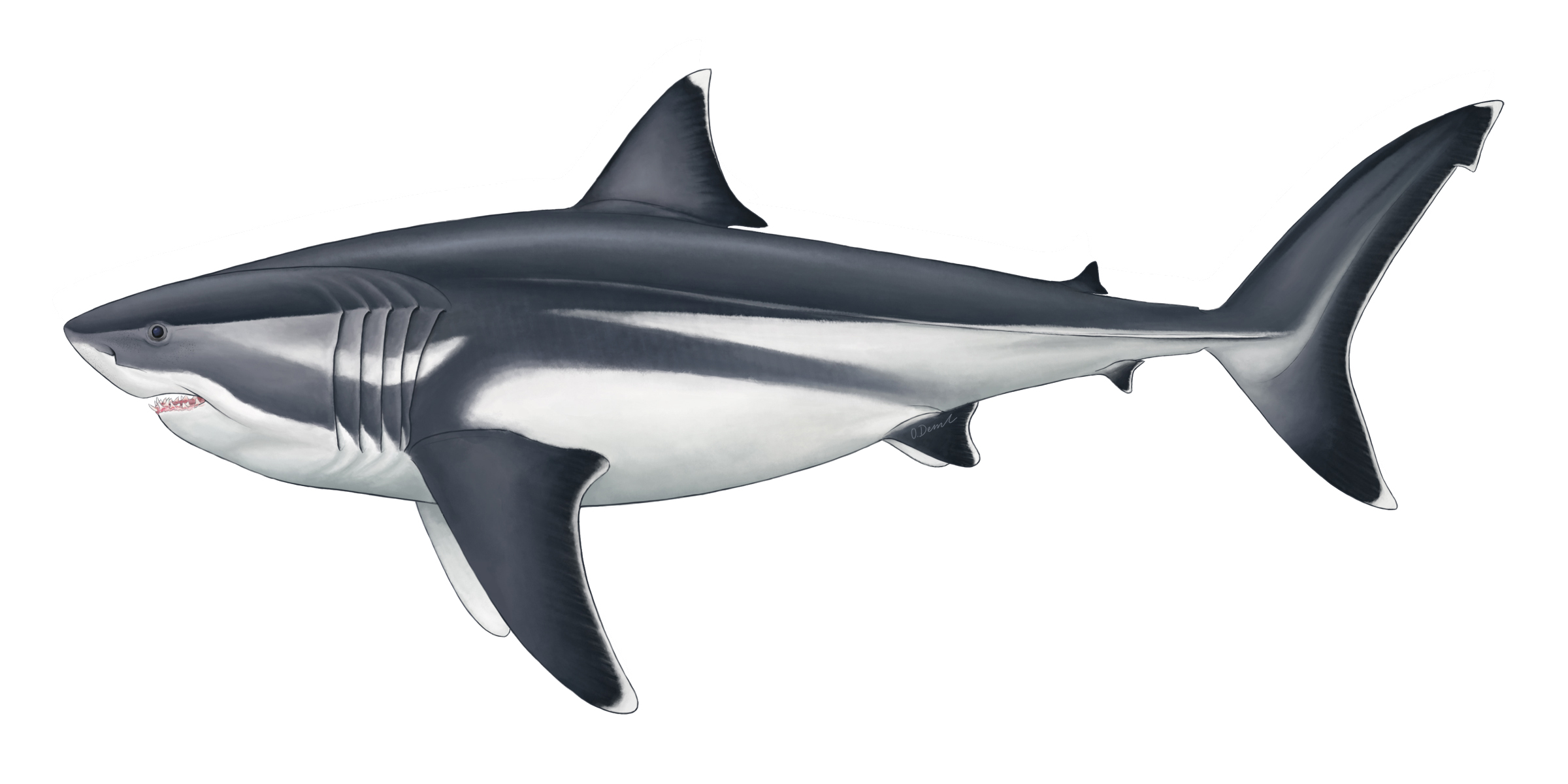
True size of prehistoric mega-shark finally revealed
To date only the length of the legendary giant shark Megalodon had been estimated but now, a new study led by the University of Bristol and Swansea University has revealed the size of the rest of its body, including fins that are as large as an adult human.
Hidden secrets written in stone:
It’s one of the best-known geological heritage sites around the world, filled with fossils and glacial secrets. Now, thanks to virtual reality technology, the ice-age past of Hallett Cove Conservation Park is revealed in a new, gamified VR experience – Beyond the Ice – and is launched this week as part of National Science Week.
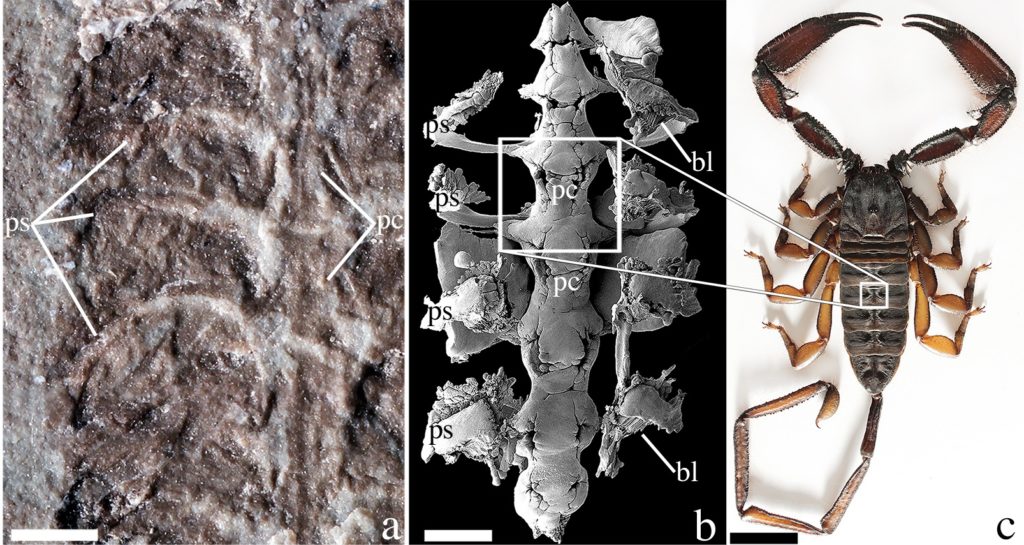
Fossil is the oldest-known scorpion
Scientists studying fossils collected 35 years ago have identified them as the oldest-known scorpion species, a prehistoric animal from about 437 million years ago. The researchers found that the animal likely had the capacity to breathe in both ancient oceans and on land.
Rutgers Expert Available to Discuss Greenland Ice Sheet Study
New Brunswick, N.J. (Dec. 23, 2019) – The southern Greenland Ice Sheet may experience precipitous melting this century due to a much smaller temperature increase than scientists thought would be required, according to a Rutgers co-authored study. The global sea level…

Fossils of the future to mostly consist of humans, domestic animals
In a co-authored paper published online in the journal Anthropocene, University of Illinois at Chicago paleontologist Roy Plotnick argues that the fossil record of mammals will provide a clear signal of the Anthropocene era.
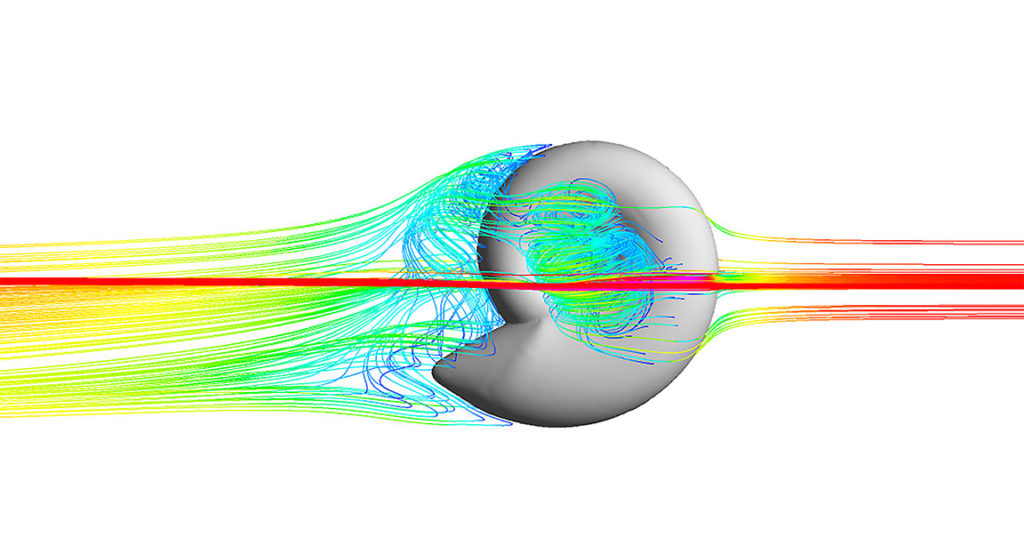
Fossils Reveal Swimming Patterns of Long Extinct Cephalopod
Computational fluid dynamics can be used to study how extinct animals used to swim. Scientists studied 65 million-year-old cephalopod fossils to gain deeper understanding of modern-day cephalopod ecosystems.